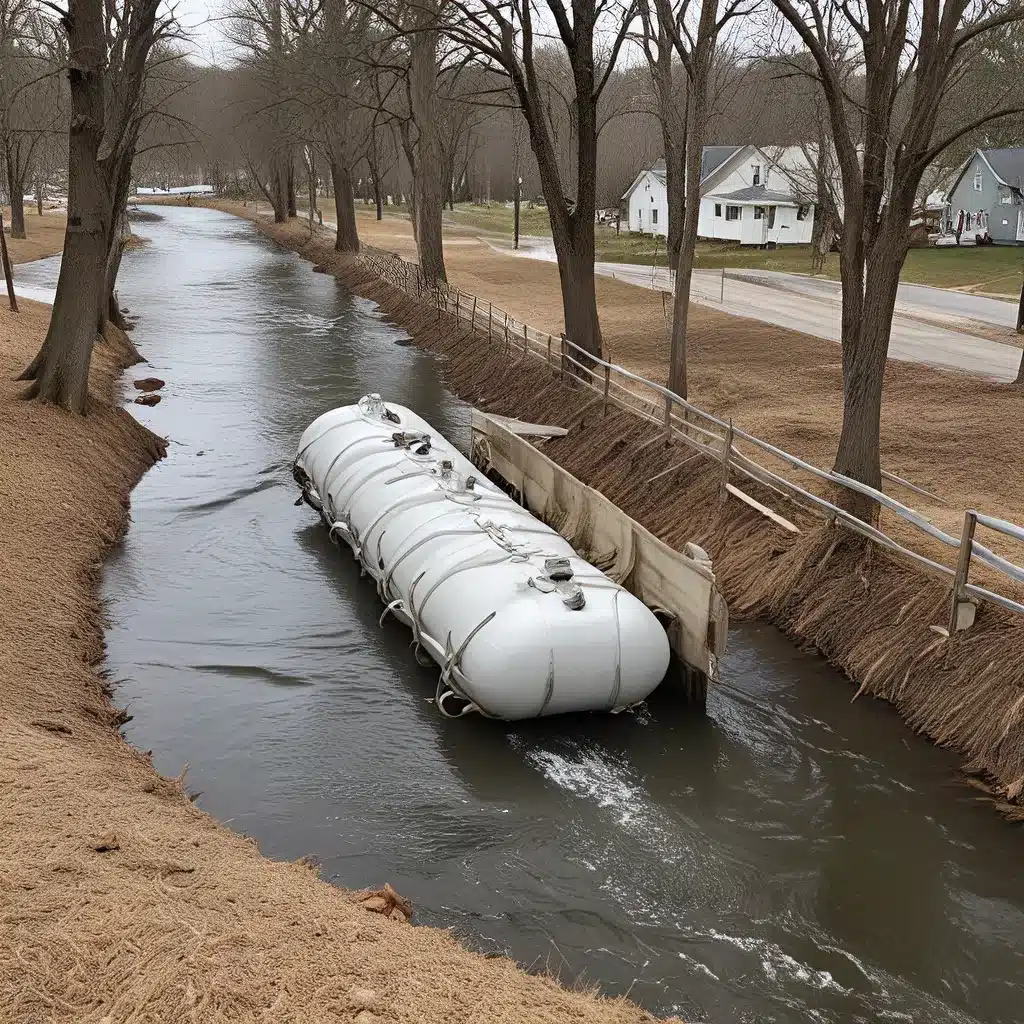
The Importance of Liquid Gold
When you think about it, water is the real liquid gold. I mean, without it, where would we be? Just a bunch of dried-up husks wandering the earth, that’s where. But luckily, us humans have gotten pretty good at managing this precious resource, even in the face of some pretty dire situations.
As the old saying goes, “When the going gets tough, the tough get… well, wet?” Okay, maybe that’s not an actual saying, but the sentiment is there. When emergencies strike, whether it’s a natural disaster, a manmade crisis, or even just a good old-fashioned drought, having a solid plan for managing our water resources can mean the difference between weathering the storm and, well, drowning in it.
And let me tell you, the team at Inland Waters Inc. has seen it all. From flash floods to chemical spills, these water warriors have tackled some pretty intense challenges. But through it all, they’ve developed a wealth of knowledge and expertise that could make even the most seasoned emergency responder green with envy.
Groundwater: The Unsung Hero
Now, when it comes to managing water in emergency situations, one of the key players is good old-fashioned groundwater. I know, I know, it doesn’t have the same glamour as surface water or desalination or any of those other high-tech solutions. But trust me, this stuff is the real MVP.
According to a report from the California Legislative Analyst’s Office, groundwater supplies about 30% of California’s overall water supply in average years, and that number can climb to as high as 40% in dry years. That’s like having a secret stash of water that you can tap into when the going gets tough.
And it’s not just California that’s getting in on the groundwater game. Across the western United States, states are recognizing the importance of this hidden resource and taking steps to better manage and protect it. Arizona, for example, has a whole system of “Active Management Areas” where groundwater use is closely monitored and regulated to ensure long-term sustainability.
But here’s the kicker: in California, our groundwater laws are, well, a bit of a mess. Unlike most other western states, we don’t have a comprehensive, statewide system for managing and permitting groundwater use. Instead, it’s kind of a patchwork of local regulations and court-adjudicated rights. And let me tell you, that can make it pretty darn difficult to get a clear picture of our groundwater resources, let alone manage them effectively in an emergency.
Contamination Conundrum
And speaking of emergencies, let’s talk about a big one: groundwater contamination. Yep, it’s a real problem, folks. Whether it’s from industrial activities, leaking underground storage tanks, or even agricultural runoff, the sad truth is that many of our groundwater basins are, well, a little on the dirty side.
According to the RAND Corporation, “Loss of Water Source Can Be Expensive to Locals” – and they ain’t kidding. When a community discovers that their groundwater is contaminated, it can mean the closure of wells, the need for expensive treatment systems, and even the reliance on costly bottled water. And let’s not forget the potential health risks to the people who, you know, actually have to drink the stuff.
But the real kicker is that this contamination can have a ripple effect on the entire water system. As the EPA points out, when a homeland security incident or natural disaster strikes, all sorts of contaminated water can end up in our stormwater and wastewater systems. And that means even more headaches for the folks trying to keep the taps flowing.
Integrated Approach: The Key to Weathering the Storm
So, what’s the solution, you ask? Well, my friends, it’s all about taking an integrated approach to water management. And that’s exactly what the team at Inland Waters Inc. is all about.
You see, these water wizards understand that when it comes to emergency preparedness, you can’t just focus on one piece of the puzzle. It’s all about looking at the big picture and bringing together a whole suite of strategies and technologies to tackle the challenge.
That means beefing up our groundwater monitoring and management efforts, so we can get a better handle on this hidden resource. It means modernizing our water laws to reflect the latest scientific understanding of how surface water and groundwater interact. And it means investing in cutting-edge water treatment technologies that can handle even the most gnarly of contaminants.
But it’s not just about the tech, my friends. It’s also about building strong partnerships and fostering a culture of preparedness. Because when disaster strikes, it’s going to take all hands on deck to keep those taps flowing. And let me tell you, the team at Inland Waters Inc. is more than ready to lead the charge.
Liquid Assets: The Future of Water Management
So, there you have it, folks: the inside scoop on how we can manage our liquid assets to weather even the toughest of storms. And let me tell you, it’s not just about surviving – it’s about thriving.
Because when we take a proactive, integrated approach to water management, we’re not just preparing for the worst. We’re also setting ourselves up for a future where water is a reliable, sustainable resource that we can all count on, no matter what curveballs Mother Nature (or the occasional human-made disaster) throws our way.
And that, my friends, is the kind of future I want to be a part of. So, if you’re ready to dive in and start building a more resilient water future, I’d highly recommend checking out the team at Inland Waters Inc. They’re the real liquid asset in this whole equation.


